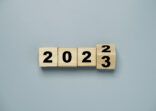FSA appreciates that it is difficult to make accurate macro predictions, especially if politics are influential in the scenarios.
While several of Wein’s predictions missed, he deserves applause for going public with a strong call on what he believed would happen. Taking a stand on issues, articulating a strong opinion even though it could turn out to be wrong, is something that the financial industry in Asia is lacking.
What are your 2016 investment-related predictions? FSA welcomes submissions from readers. Send them to me at drew.wilson@lastwordmedia.com
____________________________________________________________________________________
Wein’s 10 surprises for 2015 were:
1. The Federal Reserve finally raises short-term interest rates, well before the middle of the year, encouraged by the improving employment data and strong GDP growth. The timing proves faulty, however, as the momentum of the economy has begun to flag and a short-term slowdown has started. The end of monetary accommodation and rising rates precipitate a correction in equities. Long-term Treasury rates stay where they started and the yield curve flattens.
Comment: A bit off the mark and too early to conclude. Expectations for the Fed rate hike shifted from June to September, and now the market believes it will be in mid-December. Whether it sparks a correction is yet to be seen.
2. Our luck runs out on cyber terrorism. Hackers invade the personal and corporate accounts of a major money center bank and the Federal Reserve orders the institution to suspend transactions for five business days while the accuracy of its balances is verified. Various government departments and agencies are mobilized to deal with the problem caused by the hackers having proved to be more skillful than our corporate cyber security efforts.
Comment: Fortunately, an incident of this magnitude didn’t happen, but the prediction remains valid for 2016.
3. The year-end 2014 rally in US equities continues as the market rises for a strong performance in 2015. A growing economy, fueled by housing and capital spending and favorable earnings, enables the Standard & Poor’s 500 to increase 15% during the year, outperforming equities in most major industrialized countries throughout the world.
Comment: Pretty far off. At the end of the first week in December, the S&P 500 was up only about 1.6% for the year. It did outperform the FTSE (-0.9%), but lagged Japan (14.7%), Germany (10%) and China (7.7%).
4. Mario Draghi finally begins to expand the balance sheet of the ECB aggressively by buying sovereign debt, mortgages and corporate bonds. In spite of this expansion, Europe falls back into a serious recession. Germany is particularly weak as reduced demand from various trading partners has a major impact on its exports. The European policy makers fail to embrace the one option, fiscal spending, that could turn the economy around, and European stocks decline. Politically, Europe moves dangerously toward the right.
Comment: Missed on this one. The expansion of the ECB balance sheet began in a big way, fueling markets. Europe did not fall into recession. Germany proved to be the engine of the EU, driving the recovery through exports. Although the latest ECB announcement did not spell out aggressive measures, disappointing the market, European equities have become a favoured asset class for 2016. Europe may be moving to the right, but if so, it is largely to a refugee crisis and to the terrorist attacks in France, not the economy.
5. Shock and awe no longer works in Japan. The recession which began in Q3 of 2014 continues throughout 2015 in spite of further fiscal and monetary stimulus and the suspension of the second planned sales tax increase. The Nikkei 225 is flat for the year in yen and down in dollars.
Comment: Japan did fall into recession in Q3. But corporate earnings and the stock market have been resilient. The Nikkei 225 was up 14.7% for the year in yen terms and in US dollar terms up 11.4%.
6. China reports that it is no longer growing at 7% and that more fiscal and monetary stimulus is needed to grow at even 5% and to prevent a hard landing. It also acknowledges that it must rebalance the economy toward the consumer and away from credit-based investing in state-owned enterprises and infrastructure. What money is spent on infrastructure is focused on air, water and ground pollution, not roads and housing. A lower rate of job creation leads to protests but they are contained without excessive violence.
Comment: Fairly close on China, except infrastructure spending will go into the One Belt One Road initiative and the China-led Infrastructure Bank, both of which made progress this year. Significant protests over unemployment did not occur (or at least, were not reported).
7. The drop in the price of oil finally has an impact on Iran. The country was dependent on its sale of crude to offset the impact of sanctions. The economic weakness resulting from the unexpected decline in oil finally forces a conciliatory attitude on the part of its nuclear negotiators. Pressure to cease nuclear weapons development comes from the Iranian people as well, as they seek more economic opportunity. An agreement to roll back its weapons program is greeted positively throughout the region and world equity markets rally briefly on the news.
Comment: Pretty damn close. In July, Iran agreed to measures aimed at preventing it from developing a nuclear bomb in return for the removal of sanctions. Iran’s oil exports are now set to increase.
8. Brent slips into the $40s. The low price of crude oil, which continues throughout the first part of the year, has a major impact on Russia. A peace settlement with Ukraine is signed, giving Eastern Ukraine substantial autonomy but guaranteeing the sovereignty of the rest of the country. President Putin seems to be trying to win back the respect of the international community as the country reels from its economic problems, but the Russian citizenry finally turns on him. His approval rating plummets and he resigns by yearend. During the second half of the year, West Texas Intermediate and Brent crude are both above $70, as emerging market demand continues to increase.
Comment: Way off on this one. Russia’s conflict with Ukraine continues on low boil, the Russian economy muddles along, Vladimir Putin is stronger than ever with a high domestic approval rating and characteristic tough talk. Brent crude in December is only about $43 per barrel.
9. The year-end 2014 meltdown in the high yield market, as a result of the collapse in the price of oil, creates a huge buying opportunity. The spread between high yield and Treasurys is cut in half, and high yield becomes the best performer of the various asset classes as the U.S. economy continues to grow with no recession in sight.
Comment: It turned out to be true that there is no US recession in sight. But the S&P US High Yield Corporate Bond Index performance year-to-December is -0.8%.
10. The Republicans decide to position the party as the one that can get something done in Washington. They argue that President Obama was ineffective in his first six years, but when they got control of both the Senate and the House, legislation was passed. The Keystone pipeline finally is approved, as well as minor tax code revisions and even some changes in immigration policy. The Republicans are determined to strengthen their position with Hispanics in 2016. They want desperately to hold the nation’s highest office and they see Jeb Bush as a winner for them.
Comment: Politics are as difficult to predict as currency movements. Donald Trump has remained the front runner, with polls giving him between 31%-43% throughout the year. Jeb Bush in 2015 is polling 7%, last on the list of the top five.
















